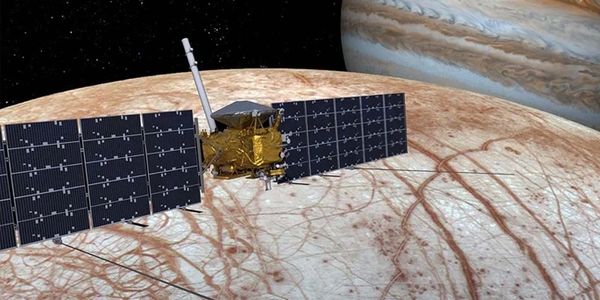Exploring Ocean worlds
PRIME
I am the Deputy Principle Investigator and Concept Scientist for JPL's Probe Using Radioisotopes for Icy Moons Exploration (PRIME). This technology concept would provide access to Europa's ocean in the 2030s, and plans for testing and analysis in the Arctic and Antarctica are underway. Read about PRIME in a recent ECO Magazine article from their special edition on Ocean Exploration.
Europa Clipper
I am a Project Staff Scientist on NASA's Europa Clipper Mission. The Clipper spacecraft will orbit Jupiter, investigating Europa's habitability by building a web of flyby observations. Read about the science of Europa and Clipper in a recent Nature Communications comment I co-wrote.

Europa-like Plate Tectonics
I've recently been funded as Principal Investigator under NASA's Solar System Workings call to study the tectonics deformation of Europa. Over the next three years, our team will investigate how Europa ended up with its present-day surface and what we can learn about material transport and habitability.
SLUSH
I am a co-investigator on Honeybee Robotics' Search for Life Using Submersible Heated Drill (SLUSH) technology concept. Funded under NASA's SESAME program, this work looks at the plausibility of using the Kilopower Nuclear Reactor technology currently under development to power the delivery of large payloads to Europa's ocean.
Salty Tree Rings
In an ongoing collaboration with Dr. Erin Leonard, I am exploring the incorporation of salts into freezing planetary ice shells to understand how ice contaminants may affect the composition and geologic evolution of planetary ice shells. Read a recent abstract by Dr. Leonard on the subject as we move towards publication.
Ocean Worlds Resurfacing
Howell and Pappalardo (2019) explores whether the processes that drive surface change on Earth could be similar to the processes driving surface change on Europa and the other icy Ocean Worlds. Read about why these bodies likely have their own special form of tectonics in Can Earth-like Plate Tectonics Occur in Ocean World Ice Shells?
Dredging-up Ocean Material
Winner of the 2017 JPL Outstanding Postdoctoral Research Award in Planetary Science and astrobiology, Howell and Pappalardo (2018) explores how the long, linear extensional bands on Europa and Ganymede might bring "fossilized ocean" material through the ice shell and expose it on the surface. Read about how frozen ocean material might be exposed in as little as 100,000 years in Band Formation and Ocean-Surface Interaction on Europa and Ganymede.
Ice Shell Thickness Prediction
A current project focuses on predicting the range and probability of potential thicknesses for Europa Ice Shell. This work might be used to help understand the ability of remote sensing instruments to perform observations, as well as help set requirements for future technologies to potentially access Europa's ocean. Stay tuned for an upcoming publication.

Earth's Plate Boundaries
Much of my work has focused on the behavior of Earth's tectonic plate boundaries. Recent work explores the vertical motions associated with the San Andreas Fault (winner of a 2016 Popular Mechanics Breakthrough Award), as well as how tectonics and volcanism interact to shape the Earth's seafloor. For the latter, read about forming anomalous domes at the Mid Atlantic Ridge, the interplay between magmatism and faulting at the Chile Ridge, and the formation of the North Atlantic.



